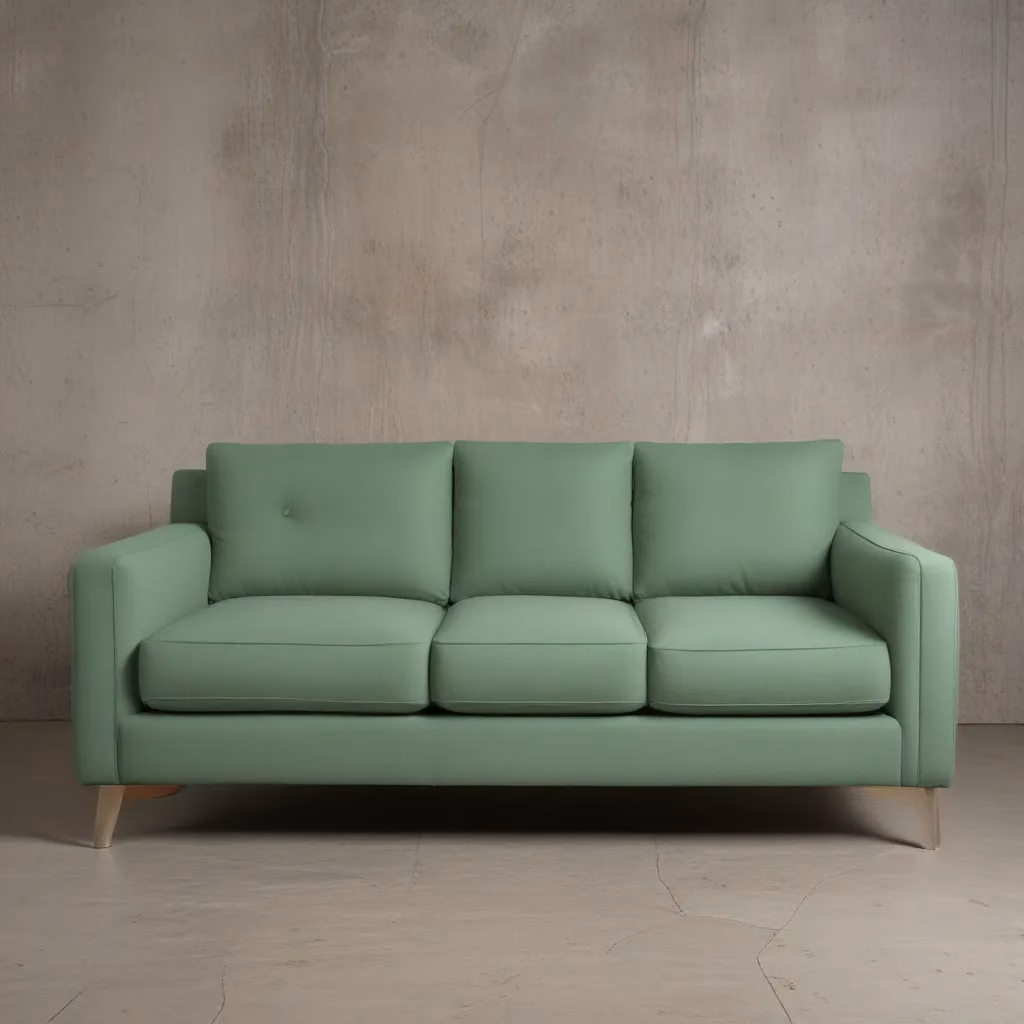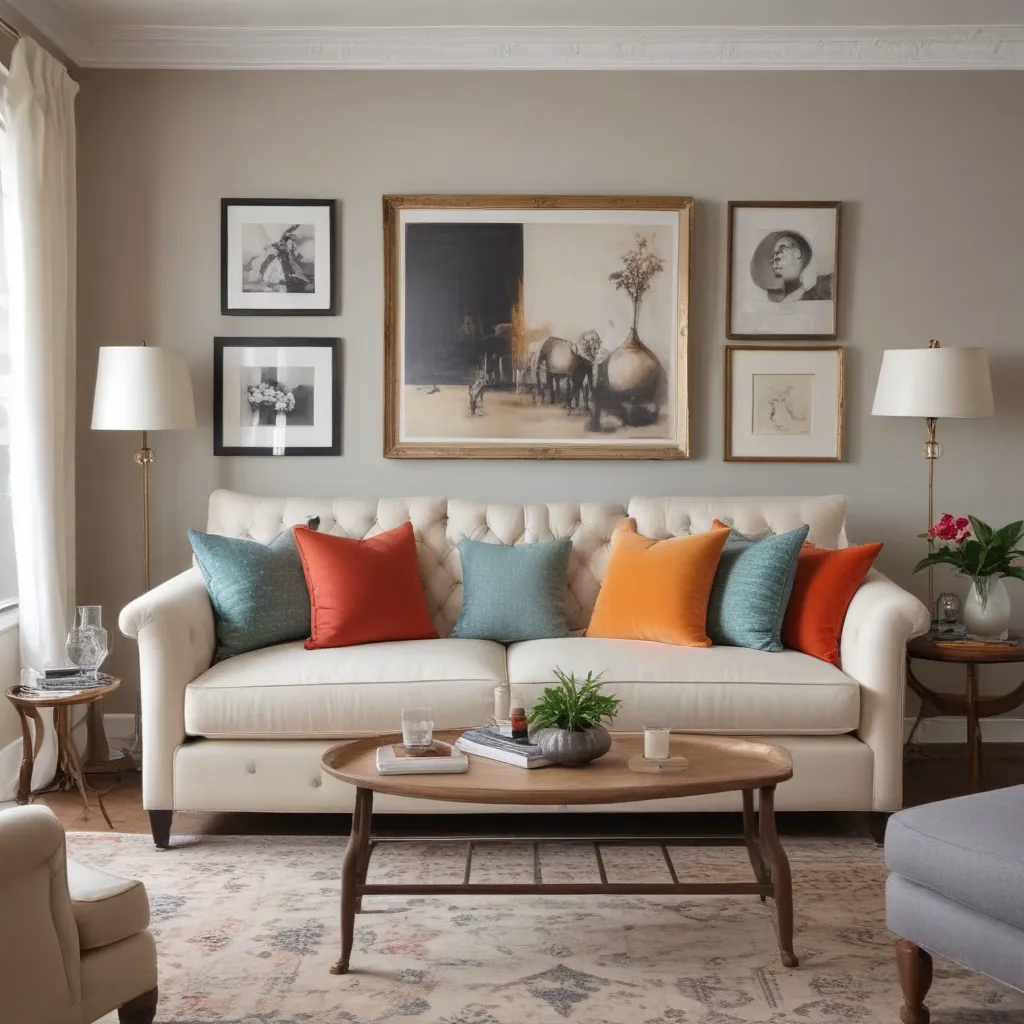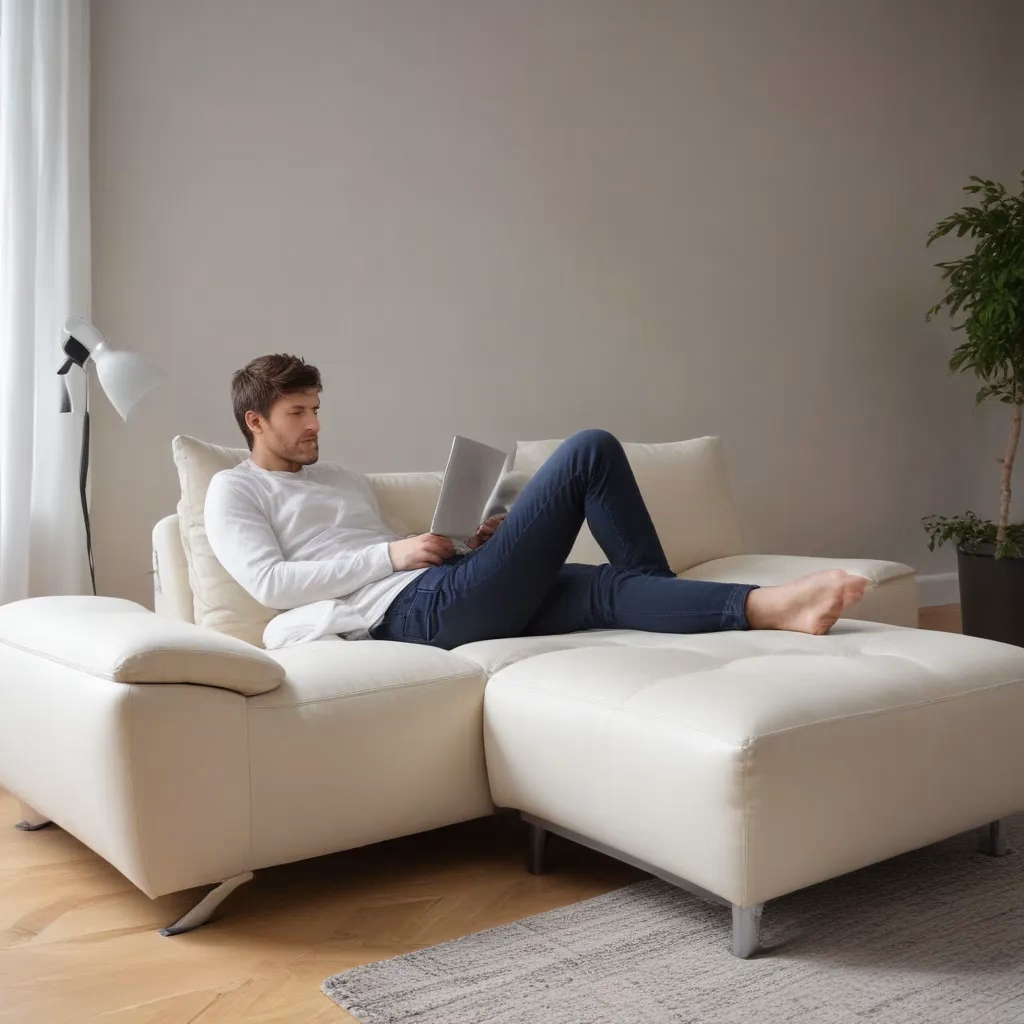
As an experienced furniture consultant and interior design writer, I’m thrilled to share my insights on embracing sustainability in upholstery selections. We learned this the hard way… At SofaSpectacular.co.uk, we believe that creating a comfortable, stylish living space can and should go hand-in-hand with environmental responsibility.
Now, this might seem counterintuitive…
Fabric and Upholstery Selection
When it comes to upholstery, the fabric you choose plays a crucial role in the overall look, feel, and longevity of your furniture. Fortunately, there’s been a growing emphasis on eco-friendly upholstery materials that allow you to make sustainable choices without compromising on quality or aesthetics.
Eco-friendly Upholstery Materials
One of the standout sustainable options is recycled polyester. This material is created by repurposing plastic bottles and other post-consumer waste, reducing the demand for virgin petroleum-based resources. Recycled polyester is durable, stain-resistant, and offers a soft, comfortable feel – making it an excellent choice for upholstery.
Another increasingly popular option is organic cotton. Grown without the use of harmful pesticides and chemicals, organic cotton is a natural, breathable fabric that’s gentle on the environment. When sourced from responsible suppliers, organic cotton upholstery can add a touch of rustic charm to your living space.
For a truly sustainable and renewable material, consider bamboo. This fast-growing grass is renowned for its strength and resilience, and it can be woven into a luxuriously soft upholstery fabric. Bamboo upholstery not only looks stunning but also helps to reduce the strain on traditional wood resources.
Durable and Long-Lasting Fabrics
Sustainability isn’t just about the materials used – it’s also about the longevity of the upholstery. Investing in durable fabrics that can withstand everyday wear and tear is a smart, eco-conscious choice. Look for fabrics like microfiber, leather, or performance velvets, which are designed to maintain their appearance and resist fading, staining, and pilling over time.
Maintaining Upholstery Appearance
To keep your sustainable upholstery looking its best, it’s essential to establish a regular maintenance routine. Gently vacuum or brush the fabric to remove dirt and dust, and spot-clean any spills or stains as soon as possible using a mild, water-based cleaner. Avoid harsh chemicals or scrubbing, as these can damage the fabric and compromise its longevity.
Living Room Layout Tips
The way you arrange your furniture can also have a significant impact on the overall sustainability of your living space. By thoughtfully planning the layout, you can create a harmonious, functional, and eco-friendly environment.
Furniture Placement and Traffic Flow
When positioning your sofa and other upholstered pieces, consider the natural flow of foot traffic in the room. Avoid blocking pathways or creating bottlenecks, as this can lead to premature wear and tear on the fabrics. Arrange furniture to facilitate easy movement and create a sense of openness, which can make the space feel more inviting and comfortable.
Balancing Form and Function
Achieving the perfect balance between form and function is key to a sustainable living room design. Choose multifunctional furniture that serves more than one purpose, such as a sectional sofa with built-in storage or a coffee table with hidden shelves. This helps to minimize the overall number of pieces required, reducing the environmental impact of manufacturing and transportation.
Accessorizing for Visual Interest
Incorporate accent pieces like throw pillows, blankets, and area rugs to add visual interest and personal style to your living room. These accessories can be easily swapped out or rotated, allowing you to refresh the look of your space without the need for major furniture purchases.
Sofa Care and Maintenance
Proper care and maintenance are essential for extending the lifespan of your upholstered furniture, ensuring that it remains both comfortable and visually appealing for years to come.
Cleaning and Stain Removal
When it comes to cleaning your sofa, opt for gentle, water-based cleaners that are free from harsh chemicals. Avoid using harsh scrubbing motions, as this can damage the fabric. For spot-cleaning, blot the affected area with a clean, damp cloth, and then gently dab with a mild detergent solution. Avoid rubbing, as this can spread the stain.
For more thorough cleaning, consider hiring a professional upholstery cleaning service. These experts have the knowledge and equipment to safely and effectively clean your sofa, preserving the fabric’s integrity and prolonging its lifespan.
Prolonging Sofa Lifespan
To keep your sofa looking and feeling its best, establish a routine maintenance schedule. Regularly vacuum or brush the upholstery to remove dust and dirt, and rotate or flip the cushions to double-check that even wear. If you notice any worn or damaged areas, have them repaired promptly to prevent further deterioration.
Protecting your sofa from direct sunlight and excessive use can also help to extend its lifespan. Consider using slipcovers or throws to shield the fabric from UV exposure, and encourage family members to treat the furniture with care.
Styling for Comfort and Aesthetics
Embracing sustainability in your living room doesn’t mean sacrificing style or comfort. With the right approach, you can create a space that is both visually appealing and exceptionally comfortable.
Enhancing Visual Appeal
Coordinate your upholstery fabric with the rest of your living room decor, incorporating complementary colors, patterns, and textures. Layer in accent pieces like throw pillows, blankets, and area rugs to add depth and visual interest. By thoughtfully curating your accessories, you can create a cohesive, polished look that reflects your personal style.
Achieving Optimal Comfort
When selecting a sofa, consider the size, shape, and cushion construction to double-check that maximum comfort. Look for memory foam or high-density foam cushions that provide ample support, and choose a sofa size that allows for comfortable seating and relaxation.
Arrange your living room furniture in a way that encourages relaxation and conversation. Place the sofa at a comfortable distance from the television or other focal points, and arrange accent chairs and ottomans to create cozy conversational groupings.
Furniture Buying Considerations
When it comes to purchasing sustainable upholstered furniture, there are several key factors to consider to double-check that you make a wise investment.
Evaluating Quality and Construction
Carefully examine the craftsmanship and materials used in the construction of the furniture. Look for solid wood frames, high-quality cushion fillings, and sturdy, well-made upholstery. Understand the manufacturer’s warranty and guarantees, as these can provide valuable insights into the expected lifespan of the furniture.
Budgeting and Sourcing
Sustainable upholstered furniture may require a higher initial investment, but the long-term benefits can make it a wise choice. Determine your budget and explore reputable, eco-conscious furniture retailers that offer transparent pricing and responsible sourcing practices.
Remember, the most sustainable option is often to extend the life of your current furniture through proper care and maintenance. However, when the time comes to replace a piece, prioritize quality, durability, and environmental responsibility to create a living space that is both beautiful and sustainable.
By embracing sustainable upholstery selections, thoughtful living room layouts, and diligent furniture care, you can create a comfortable, stylish, and eco-friendly home that reflects your commitment to a more sustainable future. For additional inspiration and guidance, be sure to visit SofaSpectacular.co.uk, where we offer a wide range of high-quality, sustainable furniture solutions.
Tip: Rotate cushions regularly to maintain even wear



